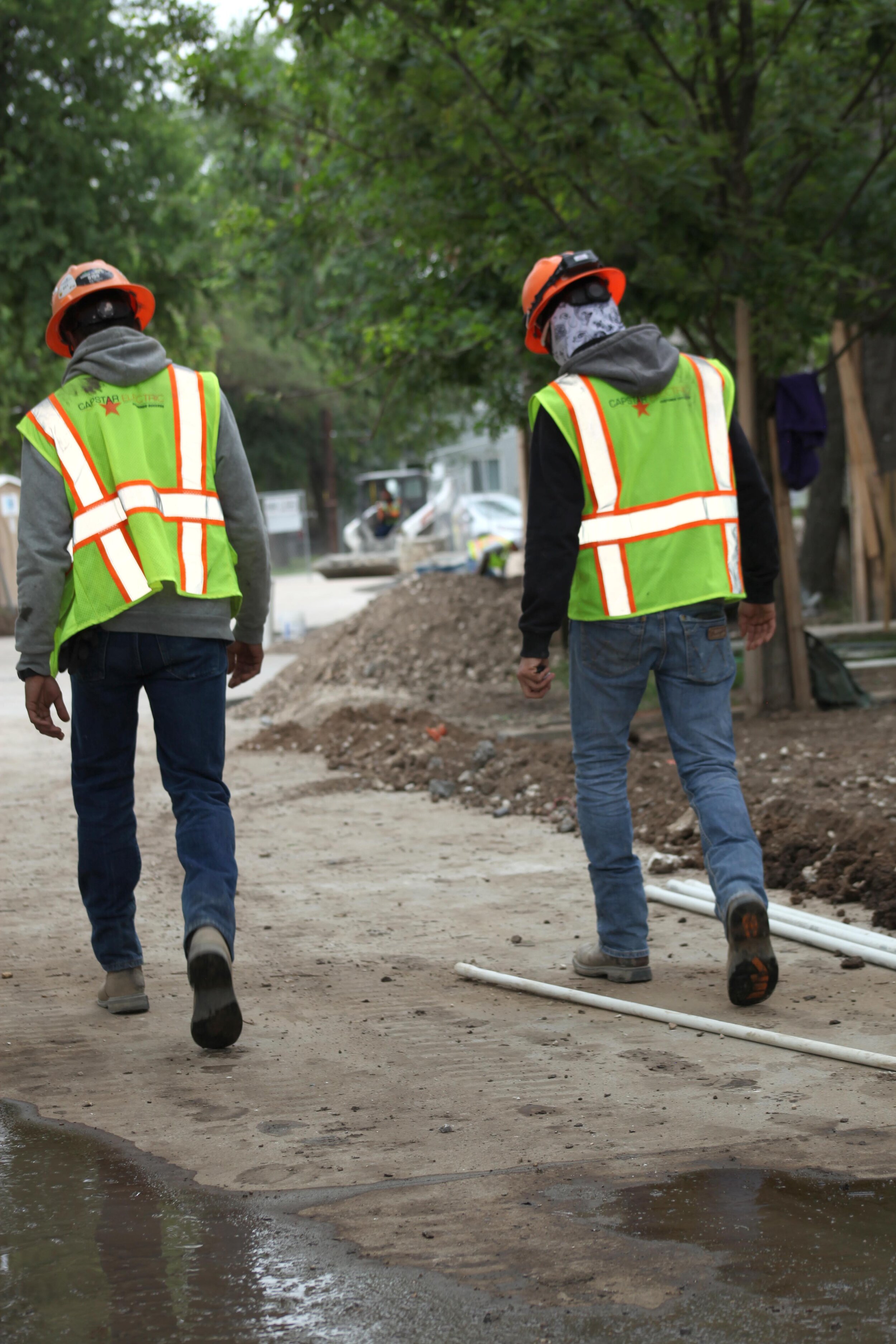Highlighted here are the decisions that were made with sustainability in mind during implementation of the Pease Park Vision Plan. Pease Park Conservancy is committed to the long term sustainability of the park’s ecology and biodiversity, as well as the sustainability of our local community.
We are grateful to Ten Eyck Landscape Architects for their knowledge, expertise, and focus on incorporating nature into the designs for Kingsbury Commons.
Thank you to Heather Venhaus with Regenerative Environmental Design for helping to gather and share the data in this series.
Providing Economic Sustainability
The renovation of Kingsbury Commons supported the local economy with 100% of the construction employees receiving a living wage and 95% of the workers living in the Austin area.



Reusing Salvaged Materials
Over $277,000 in materials were salvaged from Kingsbury Commons for reuse at the park or other parks in Austin. Reusing salvaged materials reduces environmental impacts from manufacturing, transportation and waste disposal.
Reclaiming Natural Spring Water
This restored wet weather creek is fed by spring water from Kingsbury Street. The spring previously ran down the street gutter gathering road pollutants before entering the storm drain and Shoal Creek. Today, the spring supports a thriving ecosystem in the park.
Spring water moves slowly downhill and into the soil where it recharges groundwater supplies. Native vegetation with deep fibrous roots enhance the habitat value, encourage infiltration, and help prevent soil erosion. Due to local geology and soils, seeps and springs are commonly found in Pease Park and the surrounding area.
Installing Native Plants
Native plants have been used extensively throughout the park reducing water use, providing wildlife habitat, and connecting site visitors with the beauty of local ecosystems.
Using Regional Materials
Regional materials accounted for 34% of the total materials costs during construction of Kingsbury Commons. These locally produced materials (for example, the limestone seating pictured here) reduce the energy used for transportation, promote regional identity, and support the local economy.
Maintaining & Revitalizing Historic Features
In 1971, Pease Park was designated as a historic site. The protection and restoration of historic site features such as the 1920s Tudor Cottage and Civilian Conservation Corps-era picnic tables and walls was a focus of the Kingsbury Commons redesign.
Restoring The Soil
Healthy soils are full of life and the foundation for a sustainable landscape. As part of the park renovation, 12,447 cubic yards of soil were restored prior to planting. Healthy soils are better able to sustainably support vegetation and provide benefits including nutrient cycling, water storage, and rainwater filtration.
Utilizing Renewable Energy
100% of the park’s electricity is provided by renewable energy. Austin Energy purchases renewable energy from wind, solar, and biomass facilities to minimize the City’s environmental impact. The City of Austin is committed to purchasing green power for all city facilities.
Incorporating Nature In Designs
Nature is good for our health and well-being. Research shows spending time in nature reduces stress and anxiety, increases focus and productivity, and enhances immune system function. Providing places for people to connect with nature throughout the park was a key component of the redesign.
Designing For Community Connections
Social connections are important to our health and well-being. People with strong social ties have greater resilience and ability to cope with change, live longer and recover from illness more quickly. Amenities to support social connection - such picnic areas with bbq pits, petanque and basketball courts, playgrounds and patios - were central to the redesign of Kingsbury Commons.
Using Recycled Materials
The Treehouse was constructed from steel containing 87% recycled content. On average, recycled steel uses 60% less energy and 40% less water than steel produced from virgin iron ore.
































